| Author | Message | ||||||||||||||||||||||||||||||||||||||||||||||||||||||||||||||||||||||
Vr1203 |
I'm wondering if, after all these years,does the "Dustbin" still rule? Was the cross wind problem that bad? 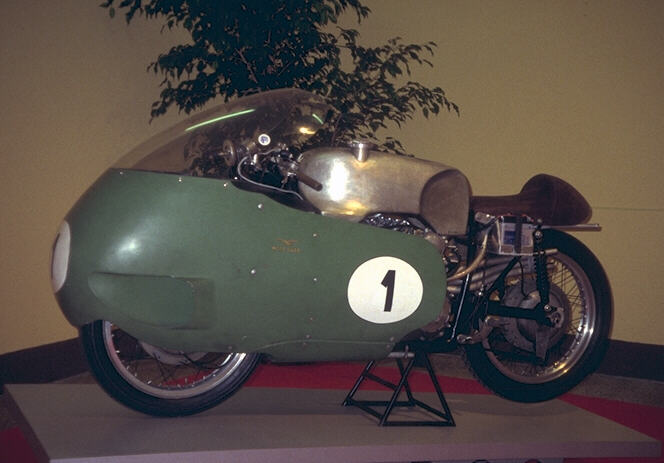 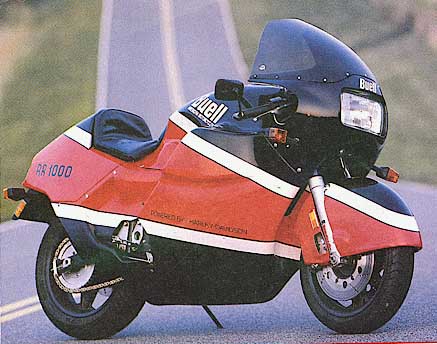 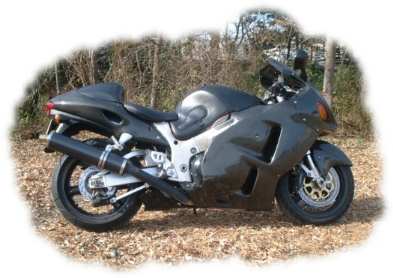 | ||||||||||||||||||||||||||||||||||||||||||||||||||||||||||||||||||||||
Steve_A |
I crunched some numbers on this awhile ago. The flat plate equivalent area (CdA) for the best Guzzi dustbin was under 2 square feet, based on measured top speed and horsepower estimates. That's substantially better than anything that's currently racing, and far better than any street bike with the possible exception of an Ecomobile. BTW, the RR1000 remains one of the slickest bikes ever built. I hear the Firebolt is pretty good too, mainly because the "A" part of the equation is small, not that the Cd is particularly good. | ||||||||||||||||||||||||||||||||||||||||||||||||||||||||||||||||||||||
Madduck |
My understanding is that the newest Ducati (999) with its control surfaces and narrowness is significantly better. Hard to measure stuff like this in any objective manner. Wind tunnels are pricey and real world has too many other variables. The Cal Tech wind tunnel fairings on the KR's in the early 70's were exceptional in the real world, this is the fairing which led to the rr1000, I think. Paul | ||||||||||||||||||||||||||||||||||||||||||||||||||||||||||||||||||||||
Msetta |
The RR1000 looks the best. | ||||||||||||||||||||||||||||||||||||||||||||||||||||||||||||||||||||||
Blake |
Steve, Do you happen to know incident area and/or CD for the RR1000? And is that with or without Richard Nallin on board.  | ||||||||||||||||||||||||||||||||||||||||||||||||||||||||||||||||||||||
Blake |
Madduck, "Better" than what? The RR1000? I'd be VERY surprised if that were the case. | ||||||||||||||||||||||||||||||||||||||||||||||||||||||||||||||||||||||
Madduck |
The only definition of "better" that matters is the number of horses it takes to get to a given velocity while maintaining control. The rr1000, if it is based on the cal tech design study never imagined velocities of 200. As the vehicle passes thru about 176?? lift becomes a real concern and management of small vortices generated by the front whell and brakes gets complicated. When you get above 175 you want to be on the 12 mile course for the run up to speed so that you can get up there at a more relaxed pace. The vehicles transition from stable to unstable due to the rate of acceleration thru the unstable transition points. If your design is good it will be stable and controlable at the intended final velocity and getting there will be possible. The Duc can get to a higher velocity than the rr1000, it can get there safely, and it can get back down. Aaron will discover how good a design this fairing is but it was never designed to travel at the velocities he is appraoching. Aaron is clearly pushing the envelope and we will see how it is. There are a number of hayubase riders who have been above 180 on the salt and never plan on trying again due the nature of the beast in that environment. Paul | ||||||||||||||||||||||||||||||||||||||||||||||||||||||||||||||||||||||
Steve_A |
>>Do you happen to know incident area and/or CD for the RR1000?<< Blake, I do have that number, but it's on a spreadsheet on another machine; I'll see if I can pull it up tonight. | ||||||||||||||||||||||||||||||||||||||||||||||||||||||||||||||||||||||
Blake |
"If"??? That's a lot of information all contingent on an "if." The Duc, at least the ones you and I can purchase, have no chance to even get close to 180 mph. I'm not following your logic. Are you assuming that the Duc 999 superbike racer will use the stock fairing design? Steve, That would be too cool. Aaron won't divulge that kind of stuff. I'm gonna start calling him "Spooky of the Team Elves Skunkworks"  | ||||||||||||||||||||||||||||||||||||||||||||||||||||||||||||||||||||||
Madduck |
Blake, Go to the Aero-tech site and look at the shapes. You will see the infulence. Look at the changes in the new Duc. It is from an entirely different school of thought on air management. It came out of the design process the europeans are using for jet fighter design. as wonderful as our 1970 design bikes are, the tools available today make superiority inevitable for the modern design. Reason the have AHDRA, Pro-thunder etc. Wouldn't want to take a 1970 F1 car against an 2002 F1 car. Paul | ||||||||||||||||||||||||||||||||||||||||||||||||||||||||||||||||||||||
Roc |
http://www.princeton.edu/~asmits/Bicycle_web/blunt.html The above is a short piece called "Drag of Blunt Bodies and Streamlined Bodies". It was interesting for me when thinking about this stuff. | ||||||||||||||||||||||||||||||||||||||||||||||||||||||||||||||||||||||
Roc |
http://www.princeton.edu/~asmits/Bicycle_web/bicycle_aero.html Maybe try this too, it is an index that includes the above. Why don't MC fairings have dimples like golf balls? I see that Corbin includes these on the trailing edges of his Beetle Bags. | ||||||||||||||||||||||||||||||||||||||||||||||||||||||||||||||||||||||
Anonymous |
Jet fighters are designed for supersonic speeds. The rules for aerodynamics are very different at those speeds. And, BTW, the Buell RW750 fairing (predecessor to the RR1000)is responsible for an enormous number of Bonneville records, check out all of the records belonging to Scott Guthrie. He used an RW fairing. Also the RR1000 has gone over 180, check out Don McCaw's record (over 190). If everything modern is so good, why is the RR1000 so much better than GSXR-750, R1, etc.? I know it is; I've seen the numbers from the wind tunnel. Stylists often have major influence over what winds up on even "race replica" bikes. The RR1000 certainly is not the ultimate design, but don't bet on it not being very near the top. | ||||||||||||||||||||||||||||||||||||||||||||||||||||||||||||||||||||||
Aaron |
Our anon friend is right. | ||||||||||||||||||||||||||||||||||||||||||||||||||||||||||||||||||||||
Davegess |
Anoyymous is right. The RR is very good BUT 200 mph is very much at the outer limits of its design. I don't doubt that the new duc is very good also. It is certainly possible to design a fairing that is as slippery as the RR and more stabel at really high speeds. It was designed to reduce drag as much as possible to allow an under powered biek to be competitive againest the mid eighties inline 4's at Daytona not go 200 mph on the salt. Dave | ||||||||||||||||||||||||||||||||||||||||||||||||||||||||||||||||||||||
Blake |
Anon, Took the words right out of my mouth.  Paul, If you want the most efficient subsonic shape, look to modern commercial jumbo jet aircraft or the military's big haulers, the C5 and C17. They don't look much like a Duc 999 do they?  What Duc may have done is to better integrate the fairing with respect to the rider, sacrificing optimum bodywork aerodynamics in favor of optimum combined bike/rider aerodynamics. What are y'all imagining is happening at the transition to 200+ mph that would put the RR fairing design "at the outer limits of its design"? I'm not saying that aerodynamic forces don't rise quickly with speed becoming formidable obstacles to speed and control. Just wondering what y'all are thinking is the biggest risk. Are you worried about structural harmonics exacerbated by oscillating vortex shedding? Or are you worried just about plain ole lift, the front end getting light? | ||||||||||||||||||||||||||||||||||||||||||||||||||||||||||||||||||||||
Steve_A |
| ||||||||||||||||||||||||||||||||||||||||||||||||||||||||||||||||||||||
Steve_A |
This from about the time I compiled the drag numbers: "Compare a modern 600cc sportbike to a pure-bred 500cc GP racer from four decades ago, and you’d find the current street-based machine with an advantage in almost every area. Hold something truly exotic, like a 1956 Moto Guzzi V-8, up against a 1999 CBR600F4, and there are few contests. Power? V-8 Guzzi: 62 horsepower; Honda streetster: 93. Brakes? Guzzi drums versus Honda discs, not even a contest. Tires: The best rac-ing tires of the period weren’t nearly as sticky as modern DOT-approved radi-als. Top speed? Ah, there’s the interesting one. The 62-horse Guzzi would annihilate the 93-horse Honda, topping out at over 160 mph compared to the Honda’s 157. The reason? Modern motorcycles, as marvelous as they are in many ways, are only slightly more aerodynamic than barn doors. The Guzzi came from a period when few rules restricted GP motorcycles, a period of exuberant experimentation with motorcycle aerodynamics. To take advantage, Moto Guzzi built its own wind tun-nel, and fitted its GP machines with “dustbin” fairings that covered the front wheel. They may have looked strange to the modern eye, but they were slick. In fact, modern motorcycles are so non-aerodynamic, that their makers cook the books when it comes time to brag about aerodynamic drag. Automobile manufacturers routinely refer to a drag co-efficient when comparing the ability of their vehicles to efficiently cleave the air. The best cars (Chevrolet Corvette, some Audi, Lexus and Mercedes sedans) have a drag coefficient of around 0.29, while the singularly exceptional General Motors EV1 electric car derives a coef-ficient near 0.20 from its extreme shape. Reading recent press releases of new sport bikes, you might have the mistaken impression that motorcycles are playing in the automotive ballpark. The Aprilia RSV1000, after all, is cited as having a “Cxs” of 0.31, which one of this country’s road-racing newspapers translated into a “Cd” (coefficient of drag) of 0.31. That’s almost as good as the cars, isn’t it? It’s not even close – but you have to know a little bit about how aerodynamic drag is measured to understand why. A long time ago, technical types noticed that aerodynamic drag was related to three main characteristics: the frontal area of the device traveling through the air, its shape, and its speed. For a given shape and frontal area, the actual drag force increased with the square of the speed; that is, when you doubled speed, the drag force quadrupled. But for a given shape, drag force varied linearly with frontal area: Try pushing two barn doors through the air, one with twice the frontal area of the other, and the drag force resisting the movement for the larger door would be twice that of the smaller. Obviously, some shapes slip through the air better than others, and that’s where the coefficient of drag comes in: It’s a way of relating the drag of any given shape with that of a simple, flat plate. Multiply the actual frontal area of a given vehicle by its coefficient of drag, and you get the “effective frontal area”, the area of a flat plate (think barn door) with the same drag as that particular vehicle. American engineers refer to that effective frontal area with the abbreviation CdA (coefficient Cd times actual frontal area A), and Italians evidently by “Cxs”. So what Aprilia was referring to was the effective frontal area (CdA) of the RSV, measured in square meters – not the dimensionless drag coefficient Cd normally quoted by automotive specifications. The fact that the 0.31 square me-ter figure of the RSV sounds much like a good automotive drag coefficient is meaningless; the two figures are as incomparable as apples and hand grenades. Given that the Aprilia’s actual frontal area with rider is around five-and-a-quarter square feet (0.48 square meters), its drag coefficient is around 0.65: worse than that of most pick-up trucks. At any given speed, a Corvette has only 60 percent more drag than the Aprilia, despite having 300 percent more frontal area. But not to pick on Aprilia: most motorcycle companies resist quoting the drag coefficients of their products, because the numbers look so poor compared to car numbers. That leads to practices such as Honda referring to CBR1000 drag properties a few years ago in unspecified units and in numerical values that could not be related to anything, and to the popularity of giving out the CdA in square meters while forgetting to men-tion the units – because the resulting numbers just happen to look like good automotive drag coefficients. Fortunately, there’s a history of published tests of motorcycle drag in the technical literature, there’s some proprietary information made available to us by manufacturers such as Buell, and drag figures can be calculated independently from top speed and power measurements. And what do all those tell us? Current sport bike drag coefficients are generally in the range of 0.55 to 0.65, with overall effective frontal areas of around 2.9 to 3.5 square feet (0.32 to 0.27 square meters). The interesting thing is when you look at a few examples that diverge from current practice: That Moto Guzzi V-8 GP bike, for instance, had a drag coefficient below 0.45, and an effective frontal area of around 2.0 square feet. That’s a third lower than a slick modern motorcycle like the Suzuki Hayabusha 1300, which has a CdA of around 2.9 square feet and a Cd of about 0.56. Give the Hayabusha the Guzzi’s low drag, and it would do almost over 210 mph with the same power that now carries it to 194 mph – a speed increase that, if achieved by horsepower alone, would take an additional 75 horses at the rear wheel. Alternatively, a 95-horsepower 600 with the Guzzi’s drag would go faster (mid-180s) than the current Honda XX or Kawasaki ZX-11. Another sport bike from the past demonstrates one reason why more effort hasn’t been paid to drag reduction: The Buell RR1000. The American company has had most of the relevant Japanese machines in the wind tunnel, but their engineers have yet to measure a street-going machine with a lower drag coefficient than that of the 1987 RR1000: Cd of 0.50, effective frontal area of 2.7 square feet. But, as even Erik Buell is willing to admit, the RR looks big and unusually rounded, and the average sport bike customer is expecting a bike that’s smaller and more sharply aggressive looking. Unfortunately, that conflict between styling and function is an ongoing battle. Low-drag isn’t achieved by sharp-nosed “penetration”, as many as-sume, but by leaving the smallest possible hole in the air behind the bike. And that means keeping airflow attached to a motorcycle past the bike’s point of maximum width, allowing the air that has been accelerated out of the way by the bike’s nose to slow back down and fill in the space behind the bike. The difficulty in doing that is the pressure gradient along that air flow path is from low pressure to higher, so cajoling the air to follow is much like pushing on a rope. It can be done, but it must be done carefully and smoothly, or the air tumbles away in turbulence leaving a big low-pressure hole behind the bike and accordingly high drag. And the shapes that work don’t always match up with styling expectations. Not surprisingly, the machines with the lowest drag – the Buell RR1000 and the Suzuki Hayabusha – depart the furthest from those angular shapes that work best at Mach II on su-personic fighters, and cleave closest to those gentle curves and tapers that well parted the air for DC-3s sixty years ago, and still work well on sub-sonic vehicles today. So when it comes to aerodynamics and motorcycles, you may be compelled to answer this question: Do you want speed, or this year’s appearance of speed? They’re not necessarily the same thing." | ||||||||||||||||||||||||||||||||||||||||||||||||||||||||||||||||||||||
Madduck |
Guys, We are not in a wind tunnel and we are not doing math. We are attempting to take a two wheeled vehicle driven by it rear wheel to speeds of 200 mph on a surface with irregularities and varying inputs on the control surfaces due to turbulence of the air passing by it. It bounces up and down and twists along its length in many differnt attitudes. The engineers who study these issues are paid to do math and to get the math to work they make simplifying assumptions so that computations and predictions can be made. Every racing body resorts to harsh measures when speeds get to this 200 mph range. Remember the Le mans racers risng over just a small hill in the draft of the car ahead. Did a verticle 360. No one predicted that behavior. Sanctioning body stepped in and speeds went down, track was modified, manufacturers rethought, figured out what happened and cranked up the speed again. Nascar has always forced change when speeds get too high, not much over 200mph either. Taking any vehicle to this speed is going to be interesting and the efficiency of the RR1000 shape will probably be found wanting. There will always be constraints which must be overcome, hence progress and design innovation. The ideal shape for 0 mph is probably the brick although I have heard excellent arguments for the pyramid. Look closely at the photos of the 999, it is the future of high speed motorcycling. I think an s2 might be coerced into that fairing someday. Paul | ||||||||||||||||||||||||||||||||||||||||||||||||||||||||||||||||||||||
Blake |
Steve, Too cool! Thanks for sharing. I have to admit, I too was fooled into thinking the CDA in m2 were simply CD numbers. Paul, Those silly top fuel drag racers. What are THEY thinking?  I guess I've become jaded wrt high airspeeds. What with designing 60' diameter earth station satellite antennas to withstand 200+ mph winds. As to the ideal shape for 0 mph... my ass ensconced in my Lay-Z-Boy recliner is pretty darn efficient at that speed.  | ||||||||||||||||||||||||||||||||||||||||||||||||||||||||||||||||||||||
Vr1203 |
WOW, Steve good job!Any opinions on the crosswind problem? Was it really a question of the old GP bikes not looking like normal street bikes that banned the Dustbin? | ||||||||||||||||||||||||||||||||||||||||||||||||||||||||||||||||||||||
Rick_A |
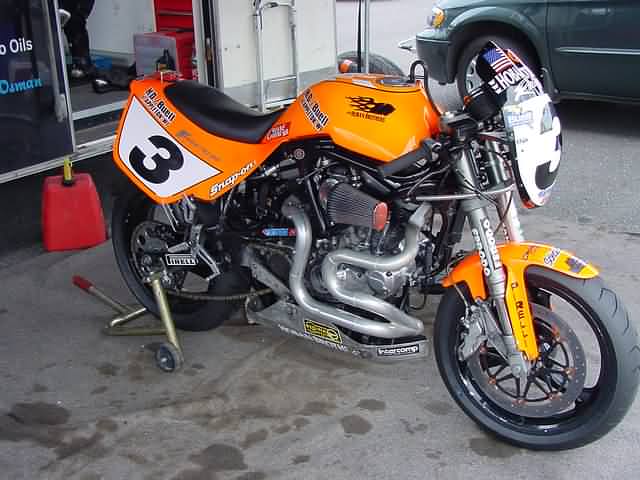 Now that's my kinda fairing. Small frontal area  . . | ||||||||||||||||||||||||||||||||||||||||||||||||||||||||||||||||||||||
Steve_A |
"Any opinions on the crosswind problem? Was it really a question of the old GP bikes not looking like normal street bikes that banned the Dustbin? " I'm sure the crosswind problem is solvable, and was most likely solved by the likes of Guzzi. The story has been that is was mostly the second tier teams without wind tunnels that had the problems, but, then again, it was a long time ago. The ban probably had a lot to do with: a) reducing speeds (remember, this was not long after the Mercedes Le Mans disaster); and, b) making GP bikes look more related to production machines. IMO, it was the most singularly unfortunate event in motorcycle development history, as it set back the cause of reasonable motorcycle aerodynamics by more than half a century. But be reassured, the dustbin will eventually return on a production bike that doesn't have to kowtow to racing rules. The Hayabusa is a good example of this, as it doesn't come close to meeting partially streamlined rules. And all this is not to dis the Ducati 999, which almost undoubtedly has pretty good aero properties, or to say the RR is any sort of ultimate. It's just that stealth fighter shapes currently popular in the styling community have almost nothing to offer aerodynamically. This comes into the area of design that Harley engineering lives in all the time: Willie G. tells them that the bike will have a 40 degree fork rake, and then they have to make it sorta work. Buell is the most engineering driven company in motorcycling, and there the process is largely reversed. If they ever do a pure race replica model, I'm sure it will have record-setting aerodynamics. BTW, there's a lot of good work on motorcycle stability and aerodynamics by Kevin Cooper; anyone interested might look up some of his papers. Also, one of the Guzzi 350s fitted with both dustbin and tail fairing had a CdA of about 1.9 square feet, which is the best number I've encountered for a full-sized road racer -- tiny 50s and 125s ridden by dwarfs don't count. | ||||||||||||||||||||||||||||||||||||||||||||||||||||||||||||||||||||||
Msetta |
Steve, That was very informative, easy to understand for an non-engineer like me, thanks. I think the RR1000 looks good for the type of bike it is, I may be the minority though. | ||||||||||||||||||||||||||||||||||||||||||||||||||||||||||||||||||||||
Djkaplan |
Anderson, Great prose, glad you're posting here. I've been reading your stuff since the Cycle days. PLEASE stay and play with us for a while. I'm glad you touched on the subject of leaving the least disturbance behind the bike as being the key to low drag. I've noticed that I'm actually more aerodynamic on my bike when I'm wearing a backpack. In a perfectly upright position, I can actually feel less drag. I suspect the pack is cleaning up the airflow behind me. This is totally subjective of course - could have been what I had for lunch that day. I found a great link to motorcycle aerodynamics by Tony Foale... http://www.tonyfoale.com/Articles/Aerodynamics/AERO.htm Hey Steve, do you think you could get Kevin Cameron to drop by? It would be like getting a visit from the Pope (or Erik). | ||||||||||||||||||||||||||||||||||||||||||||||||||||||||||||||||||||||
Roc |
Steve A - I have enjoyed your posting, thank you. Are the drag #'s for the S2/S3, posted above, with mirrors and turn signals? | ||||||||||||||||||||||||||||||||||||||||||||||||||||||||||||||||||||||
Jim_Witt |
Humm ... 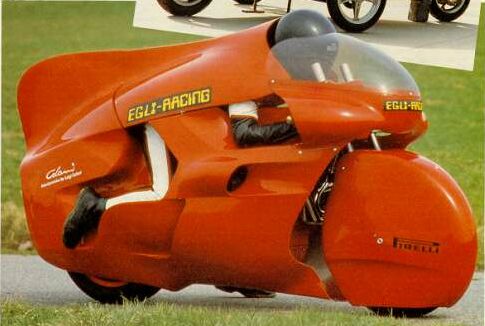 -S'later, -JW:>  | ||||||||||||||||||||||||||||||||||||||||||||||||||||||||||||||||||||||
Davegess |
Crosswinds First I think steve is right that the dustbin's got binned (sorry) 'cause of speed and marketing but it got blamed on safety. As far as how stable a vehicle is in a cross wind I think it is a simple matter of the center of gravity being ahead of the center of pressure. Thats why old bathtub shaped Saabs with a front engine were very stable in nasty cross winds and Beetles were not. And the Beetle van even worse. On bike I would think you would want the CoP not only behind the CoG but also below it? That is a pure SWAG. As far as the RR going 300 mph I don't think it is any sort of magic number just that as the speed increases any sort of lift that is there also increases. The basic shape of the bike is that of a wing, the airflow path over the top is longer than that over the bottom so you create lift. What I think is that as you start getting above 200 mph the bike gets lighter. If the surface is not good this becomes a real problem. If the salt is good this is less of a problem. The cars that had aero problems happened because of a serious increase in speed in a very short period of time. Aerodynamics that helped the car go 170 mph was going to make it get squirlly at 180 and dangerous at 190. What happened is that the big jump in tire technology and HP meant that a car that went over a small rise last year at 170 came back the next year and did it at 190 and got airborne. No one had the chance to see what happened at 180. I don't think that is the issue at Bonneville. We have gone 185 so we know what happens. Don McCaw has gone 192 and he did not get airborne. I don't think it is easy nor is it entirely safe but it is also not crazy. dave | ||||||||||||||||||||||||||||||||||||||||||||||||||||||||||||||||||||||
Blake |
heheheh, you said the "the RR going 300 mph" ![:]](http://www.badweatherbikers.com/buell/clipart/proud.gif) Is the lift really that significant? It is a very thin bike. Most of the air gets pushed to the sides. Right? I'm thinking drag acting on center of pressure is simply putting more weight on the rear tire, less on the front. | ||||||||||||||||||||||||||||||||||||||||||||||||||||||||||||||||||||||
Davegess |
Blake you may be right but I suspect, not haivng ever done it of course that the bike gets light in the old steering department and becomes hard to keep going in the right direction. As speed increases this will get worse and at soem point the rider is simply holding on hoping that he can get through the timed bit before things get very tricky. (Actually many record runs have been a matter of hanging on and hoping the vehicle did the right thing.) I suspect Richard would hang on and not back off come hell or high water so hopefully the thing will behave. Dave Gess |